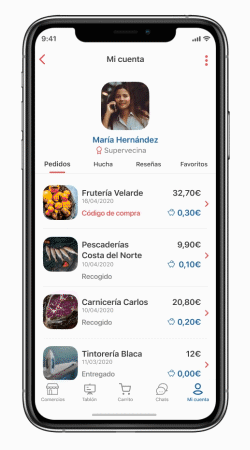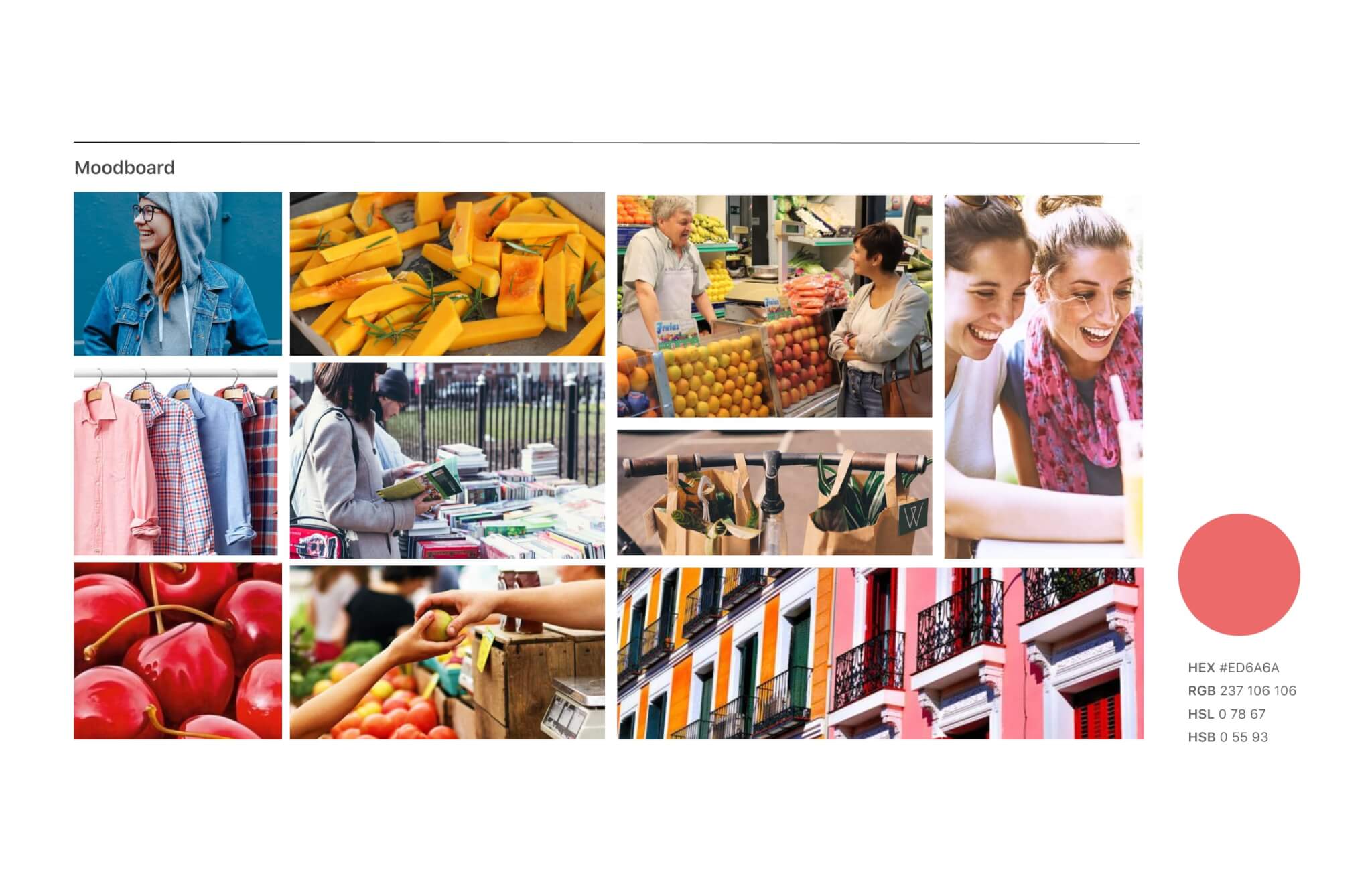PORTFOLIO
Collaboratively design a solution to address the global challenges arising from the coronavirus pandemic.
We have entered a time of change because of this Covid-19 situation.
This change has been very rapid, and our circumstances and those of the people around us have changed drastically: not being able to leave home, closed businesses, misinformation, and uncertainty about the near future.
We are a group of 3 designers, María from 🇦🇷 Argentina, Raquel and Susana from 🇪🇸 Spain, who have created a solution in the form of an application to support small local commerce.
Client
Goal
Team & Roles
Time
Our solution is called +Local – Closer to your local businesses.
Consumers and small business owners are our users—proposed solutions.
On the one hand, it allows small business owners to
- Advertise their products through promotion and inspirational content. We want the platform to serve as a showcase; it is not a substitute for the current trade but support that will give them visibility in the community.
- Direct contact with the consumer is essential for merchants to maintain the natural and close treatment, the personalised attention that characterises this type of establishment. That, together with the quality, is the most valued by consumers.
- Selling products online allows them to be known, build loyalty and attract new consumers; it also offers alternatives to traditional trade to adapt to the current situation.
On the consumer side:
- They can find the nearest local stores and have detailed information accessible from each store, possibly filtering their searches with the content that interests them.
- Request to contact the community of merchants if they are still looking for the service or product they need.
- Collaborate with the small business through a solidarity piggy bank where they can donate the returns of the purchase, an action that they can activate and deactivate whenever they want
Lack of digitalisation, partial customer loyalty, little exposure to the Internet and change in consumer habits.
Due to people being unable to leave their homes for weeks at a time and the physical closure of stores, these previously secondary problems significantly impacted small businesses.
Small business concerns:
- Owners notice that consumers appreciate the proximity product.
- Need for digitalisation without means or knowledge.
- 50% of interviewees use social media to get new customers and bet on visual marketing.
- Their customers value personal treatment.
- Word of mouth is still the leading advertising channel.
How is consumption changing in these times of confinement?
- Spanish consumers with a high level of interaction with online shopping channels will be 37% compared to 25% before the pandemic (Study: The consumer and COVID-19 ).
- 58% of Spanish consumers expect to have a high level of interaction with physical stores, compared to a ratio of 74% before the pandemic.
- 48% of Spanish consumers want more use of digital payment systems.
Design Thinking Methodology to address the problem
We are in the phase of understanding, devising and deciding what problems we find and what solutions we use.
Benchmarking
Our value proposition
First sketches of the design in paper and digital versions. First results of user tests
From the information captured on paper, the information architecture was organised, and the app screens were developed with functionality in mind; the tool needed to be intuitive and easy to use.
The first interactive prototype was built for testing, and the first successes and failures were identified. This allowed iterating and rethinking some of the app’s features before making the high-resolution prototype.
We defined our brand and started with the design of our application. Moodboard and picking the colour
Elección de color:
This combination that expresses strength, reliability, confidence and vitality helps us create a solid, energetic, cheerful and optimistic brand image.
Typography:
The interactive prototype made in Figma
The main features of +Local are:
- Your local stores in one place. Online sale of products on offer and promotions that the owner wants to advertise.
- Direct communication with the owners in the form of a chat.
- Solidarity piggy bank by donating the returns of your purchase. Voluntary collaboration with the store (within the consumer profile).
- Consumers have a voice. Board for consumers in case they need something they need help finding.
Monetisation
- We have created a system of featured ads for merchants who want more visibility in their promotions.
- Different subscription levels in case of having more than one business for the same owner.
- If the app has enough success, we will consider setting in a Google Ads-type ad system.
Lessons learned and next steps.
Board Functionality
We observed that the functionality is not well understood; most of the interviewees believe that it is a social network where everyone can interact to help each other’s neighbours; we explained that the purpose is to have a space to make inquiries and that only traders can answer them.
This only pleases some; what initially seemed like a good idea now generates doubts and creates a division of opinions about it.
Changes to the proposal
To solve this, we propose several strategies:
- Reformulate the concept to make it more understandable, and explain why only merchants are authorised to answer messages.
- Value the existence of the figure of the moderator and that the whole community can respond to the doubts that arise.
- Evaluate the continuity, retest and analyse if this functionality is so important and if it provides so much value to keep it.
Piggy bank functionality
We have found out that we need the collaboration of a financial institution to carry it out. We must assess the cost and difficulty of implementing it and if it brings benefits to compensate for it.
Changes to the proposal
- Evaluate the feasibility of this idea with experts in the sector and analyse other options such as Wordlcoo.
- Study also if it is more feasible that the savings are made in each store the customer would have a balance in their favour in each establishment or could donate it to the same if they so choose. We would have to analyse costs, feasibility, and interest on the part of the owners of the establishments.
- Disregard the savings, only giving the option of donating the rounding up at the end of each purchase. This is the easiest and most economical option.
Functionality inspirational content
This section, designed to encourage traffic in the profiles of the stores, is better received than we expected. It is content that the users like and surprise them.
Changes to the proposal
Value the possibility of giving it more visibility within the app or explaining this section in the onboarding.
User Registration
In general terms, we must also rethink when to ask for registration and personal data. In our prototype, we asked for it at the beginning, but when we did our tests, it was a problem for some users for an app launched new to the market and unknown.
Changes to the proposal
Value to let access to the user who can find the nearest stores (without contact details) and promotions, but if you want to chat, post on the board or make a purchase online, you have to register.
Now we are looking forward to phase II of this project, where we will see how to continue with this plan, and we will keep you updated. Many thanks to UXER and TeamLabs for making this initiative possible as part of the @COVID19CHALLENGE of UXERS IN ACTION.
Here we leave our presentation of the project we did on Youtube in case you want to meet us :).
Team
Let’s talk
Always open to listening to new projects.

































